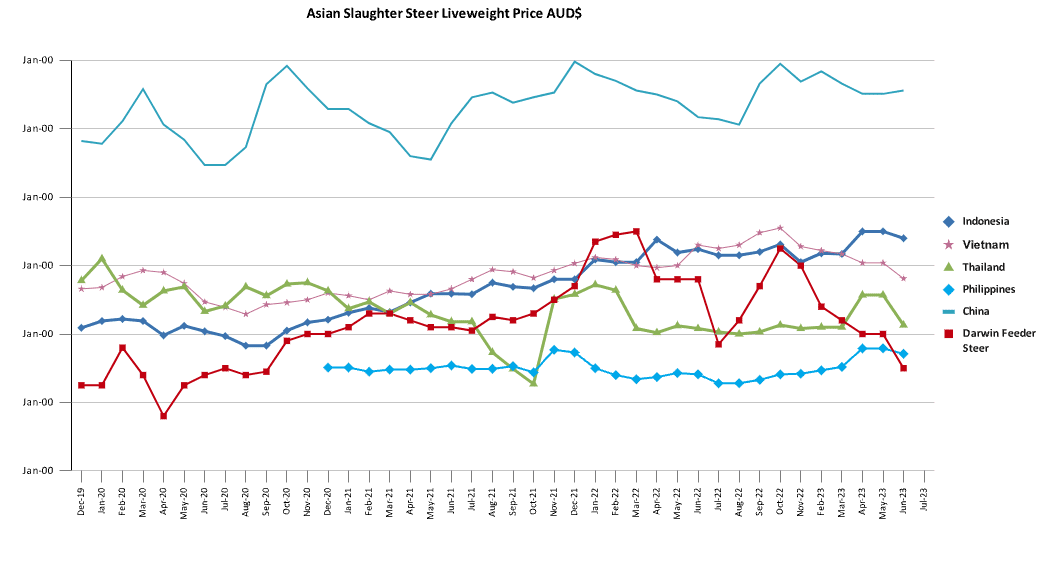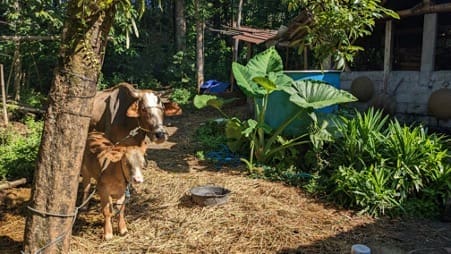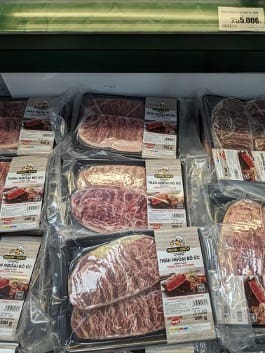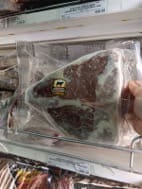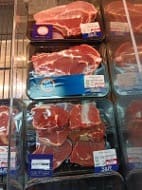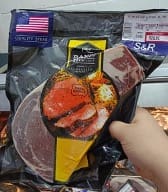
113th Edition: June 2023
Meat the Market Asia – Podcast Link (Spotify)
Rafee is importing Australian sheep into Singapore in 2023 for the Live Korban and has been involved in the process since ESCAS started in 2023. We discuss the festival itself and the relationship between religion and animal welfare and what is being done to ensure there are advancements every year. Meat the Market Asia talks with local farmers, traders, any real people in SE Asia so you can understand what is going on directly from them rather than secondhand from me. Contact me if you have a story you want to share.
Event Watch:- Korban/Qurban/Eid al-Adha/Hari raya haji
The Festival of Sacrifice has several different names and spellings and is an important annual event in the Islamic calendar. For those that know religious texts, it is a commemoration of the willingness of the prophet Ibrahim to sacrifice his son Ismail in an act of obedience to Allah (God). It is also marked by the annual pilgrimage to Mecca known as the Haj, and it is an obligation of all muslims who are able bodied to complete this at least once in their lifetime.
The sacrifice component of the festival results in large numbers of livestock slaughtered all around the world over a 3-4 day period which this year starts on the morning of the 29 June. The event focuses on the act of giving, and the carcass is usually divided into thirds with it distributed between self, family, and those in need. The other purpose is the connection with the livestock itself and understanding and appreciation of the life given by the animal which is why local slaughter is often important. Any animal of value can be used with a preference for sheep, goats, and cattle.
In Australia the Middle East region is well known for the importance of the connection between live sheep export and the festival EID. In Southeast Asia the main locations of importance are in Indonesia and Malaysia where there are large majority muslim populations.
Live Qurban
Indonesia: There is no health protocol between Australia and Indonesia for the import of Australian sheep and goats for feeding and slaughter purposes (only breeding) and so small local goats are used.
For cattle, around Qurban they are checked by Indonesian vets and students to ensure they are fit for human consumption, healthy, and this year they all need to be vaccinated for FMD. Prices for local cattle for Qurban are about IDR 70,000-80,000 / kg liveweight. Unlike normal slaughter, the entire animal needs to be purchased, often by multiple families, and then distributed and so large animals are not as suited for this. Australian cattle are too large and ESCAS requirements make them less suited to the event, therefore we don’t see the same jump in Australian slaughter cattle numbers that we see during Ramadan which has a focus on gathering and eating, rather than on the act of sacrifice. Cattle pens have already been set up on the street to sell local cattle for the event.
Malaysia: Lack of ability to control Malaysian sheep supply chains over the last 5 years has resulted in a 6 week ban of exports of sheep to Malaysia. And similar to Indonesia, Australian cattle are generally too large and not suited for the festival needs.
Singapore: Live Korban is being allowed in Singapore for the first time in 4 years. The impact of ESCAS and the importance of control and animal welfare in Singapore can be understood from this month’s Podcast with Rafee where he talks about the festival itself and how the Australian regulations have impacted the outcome of the event.
Overseas Qurban
Overseas Qurban is performed outside the nation of the donor. This includes sheep and cattle processed over the 3 days in abattoirs in Australia under strict conditions to be exported to overseas countries. In more developed nations or non muslim countries this is becoming a more commonly accepted practice.
The organisation of overseas Qurban is a huge industry. Australian exporters have the opportunity to capitalise on this further through specifically targeting high value segments with improved packaging and portioning although this is a niche opportunity.
For others involved in other parts of the Australian industry there is considerable opportunity to invest in improved processes in overseas abattoirs and processing, either temporary or permanent facilities, that are set up to handle large throughputs for short periods annually. The biggest risk is that with many commercial operators in the space, and no regulation or oversight, the quality of sheep, the outcome of the slaughter, and the outcome of the meat being distributed to those that are truly in need is not guaranteed. Australia can also extend its animal welfare credentials in the region through improving outcomes for local animals.
Regional Livestock Movements
The border between Laos and Vietnam has been officially closed since December however unofficial trade has resumed and there are reports of hundreds of cattle crossing the Laos-Vietnam and Cambodia-Vietnam border daily.
Despite the partial resumption of trade, the risks inherent in regional cattle trading continue for Thai traders. This month it was reported that they are banning movement of cattle from Myanmar for 90 days due to an outbreak of FMD. The reality of the closure and the impacts to cattle numbers in the region are yet to be felt.
The Vietnam to China border still remains relatively closed, with only small numbers of local cattle now believed to be moving across the border at remote points. There have been no further updates with official trade into China through Laos or Myanmar.
The recent outbreak of LSD in Indonesia has also resulted in greater controls and restrictions on the movements of cattle from the affected areas including in Pacitan, East Java and Pasuruan Regency, East Java.
Indonesia : Steers AUD $5.40 / kg live weight (IDR 9,903 = 1 AUD)
Indonesian importers of Australian cattle still remain hesitant to import despite dropping Australian cattle prices due to ongoing FMD risks and competition from other sources, most notably the shift to Indian buffalo meat that we have previously discussed. Prices remain fixed for Australian slaughter weight steers at about IDR 53,000. Prices of beef in Jakarta wet markets have risen to about IDR 135,000 from IDR 120,000 before Ramadan but demand has softened. The range in prices in wet markets and especially modern retail is now large due to many options for beef cuts and a large range of quality including local and imported beef which makes price reporting a challenge.
FMD and LSD continue to threaten cattle farms in Indonesia. The hardest impacted sector is currently the dairy cattle industry. There are varying reports but up to 40% of the dairy herd is estimated to have been lost in East Java which accounted for about 60% of the dairy industry of Indonesia. This includes those that culled their healthy cattle rather than risking the cattle contracting and dying from FMD. The impact has largely been attributed to the delay in the initial rollout of the vaccination program and poor biosecurity in small holder cooperatives. The dairy herd is now beginning its rebuild which will be expensive and slow, but may offer some opportunities to establish more productive cooperatives through strategic commercial investment. It will be imperative that biosecurity is enforced.
LSD continues to move through Indonesia and there is a renewed push to increase farmer awareness of the virus. In May the Australian Government publicly announced the arrival of the first tranche of 500,000 doses of LSD vaccine to Indonesia with a further 500,000 doses available if needed. While availability of vaccines remains important, the administration of the vaccine is more important. There is still no known FMD equivalent vaccination program established to ensure farmers are routinely vaccinating their cattle. The reason for this is largely because the current LSD vaccine types have issues including the potential to have vaccine reactions which can mimic the virus itself.
During a recent visit to Yogyakarta (“Jogja”) in south central Island of Java I was fortunate to talk with several farmers with local cattle. When travelling through Bali or Vietnam there are cattle visible on the side of the road and in rice fields, regulations in much of the rest of Indonesia mean that it is difficult to see cattle from the road. Cattle are generally kept as cow calf units in back yards with 1-3 cows reasonably common. Owners have to cut grass on a daily basis to feed the cows, or make arrangements with rice farmers to collect rice hay. Reproduction is usually done via artificial insemination from the local vet and because the cattle are tethered it relies on the owner to observe heat mainly by observation. Farmers I talked to had surprisingly high reproductive success. Young cattle are sold and fed by finishing operations that then supply into abattoirs.
Cow-calf in the backyard of a house in Indonesia. Often cows may have sheds that they will sit inside
The farmers I spoke to were aware of FMD in Indonesia and one of them had a friend that had been impacted by infection of his cattle with the cows losing significant condition. Both farmers were also aware of vaccination and their local veterinarian had FMD vaccine in stock. They told me they had implemented some biosecurity measures such as not letting any outsiders come in contact with the cattle, which were obviously not in force during my visit.
Even with awareness of the virus, access to vaccine, and an understanding of its potential to impact the health of their cattle they had done little to protect their investment. A stark reminder of how hard it is to get anyone to change their behaviour.
Vietnam : Steers AUD $4.81 / kg live weight (VND15,540 = 1AUD)
Interest in importing live cattle trading seems to be growing in Vietnam despite no real change in condition from the demand side in Vietnam, 2 shipments arrived in May including one breeder cattle shipment. We have seen this in Vietnam before as importers return into the market and we see a scramble for imports and regain of market share irrespective of the relative supply demand. This is largely driven by the ambitious and opportunistic nature of Vietnamese business people, and the fact that they are generally trading slaughter weight animals that they plan on selling relatively quickly. It is unlikely that we will see this to the extent as we have seen in the past, but I have personally been contacted by companies that have not traded for many years looking to re-enter the market so it may be an indication of what is to come.
Australian Steer prices into abattoirs seem to have taken a reasonable drop from VND 80,000 to VND 74,000 theoretically making them competitive and profitable again if the market demand returns. Thai cattle are trading at VND 80,000 and also explains the renewed interest in Australian cattle. Local cattle with smaller frames are trading between VND 65,000-69,000 / kg liveweight.
Hot beef sold into wet markets is wholesaling at around VND 205,000 (AUD $13.33).
Meltique striploin steaks in Lotte Supermarket labelled as “Australian Beef”. Selling for VND 255,000/kg (AUD $16.31)
For beef exporters to Vietnam there are many opportunities for trading at all levels. One ongoing trend to be aware of is fat infused beef products in Vietnam and they are well accepted in most retail stores and food service and attracts a reasonably competitive price.
Philippines: Slaughter Steers AUD $3.71 / kg liveweight (P. 37.4 = 1AUD)
The price of beef and slaughter steers in the Philippines has remained relatively constant over the last month. Beef knuckle in the wet market is around P.560 and supermarket P.600. Slaughter steer price in Mindanao is between P.130-140.
The range in quality and price of beef in the region is on show this month in Philippines where you can source any quality of beef product you want.
Thailand Steers AUD $4.54 (Tb 23.15 = 1 AUD)
Local bull prices have dropped back to Tb 95/kg. However competition with imported beef products and high feed costs are still making profitability difficult. Reports from local producers is that some feed costs seem to have reached the peak and are now on the way down which may make trading more profitable again. The shifting border closures in Vietnam, China, and now Myanmar continue to impact local trader attitudes to regional trading.
Darwin Feeder Steers (AUD $3.50)
Reports from the NTLEA, based on feedback from buyers, is that the feeder steers out of Darwin have ranged from $3.30/kg at the start of June to $3.50/kg for feeder steers exported at the end of the month (purchased mid May). For Darwin heifers the price has changed from around $3.00/kg to $3.20/kg in the same period.
Not sure about other ports, but Darwin shipped 23,943 head in May … rather more than what DAFF has published.
DAFF reported live export figures have been updated on the website but discrepancies exist between DAFF and Darwin port numbers. Numbers below have been approximated based on combined figures. DAFF has a policy of releasing figures as they come to hand and there remains a challenge between having timely vs accurate numbers.
| 2022 (May) | 2023 (May) | Indonesia | Vietnam | China | Other | |
| Darwin | 90,112* | 95,741*** | 90,238 | – | – | 5,503 |
| Townsville | 21,131 | 53,016 | 29,999 | 21,636 | – | 1,381 |
| Fremantle | 18,702 | 19,489 | 3,175 | 9,596 | 4,464 | 2,254 |
| Portland** | 53,532 | 32,786 | 1,250 | – | 29,520 | 2,016 |
| Wyndham | 10,911 | 6,046 | 6,046 | – | – | – |
| Broome | 21,798 | 8,096 | 6,400 | – | – | 1,696 |
| Total | 216,186 | 215,174 | 137,108 | 31,232 | 33,984 | 12,850 |
*Darwin 2,900 buffalo to Indonesia
**Portland all breeder cattle
***1,434 buffalo to Indonesia, Malaysia, and Brunei

